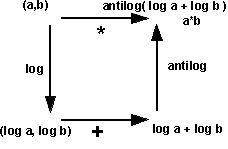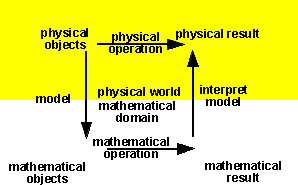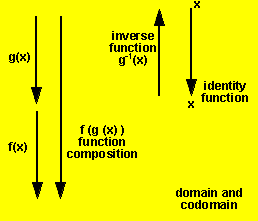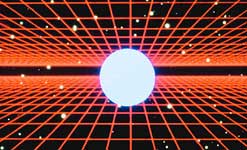Sometimes we can find an equivalence between operations, for instance: log(a*b) = log a + log b.

Isomorphism
If we can reverse the function in a morphism, that is if it is one to one, then it is called an isomorphism. If the function is many to one then it is a homomorphism.

In the days before calculators it was quite difficult to do multiplications, so it could be easier to take the logarithm of each number, then add them together, then take the antilogarithm to get the product of the two numbers.
Mathematical Modelling
Any application of mathematics can be though of as an isomorphism. If we cannot predict the result of a physical operation then we try to find an equivalent mathematical operation.

Morphisms within mathematics
Morphisms can be applied in:
- sets.
- groups
- vector spaces and linear transformations
- topology
Automorphism
A morphism which preserves the symmetry. The set of automorphisms of an object together with the operation of function composition forms a group, so it has the following properties:
- Closure
- Identity
- Inverse
- Associativity

Inner and Outer automorphisms
The operation pout = m * pin *m-1 is called conjugation by m.
If m is a member of the same group as p then this is called an inner morphism, otherwise if there is no correspondence with an element of the object, it is an outer morphism.

